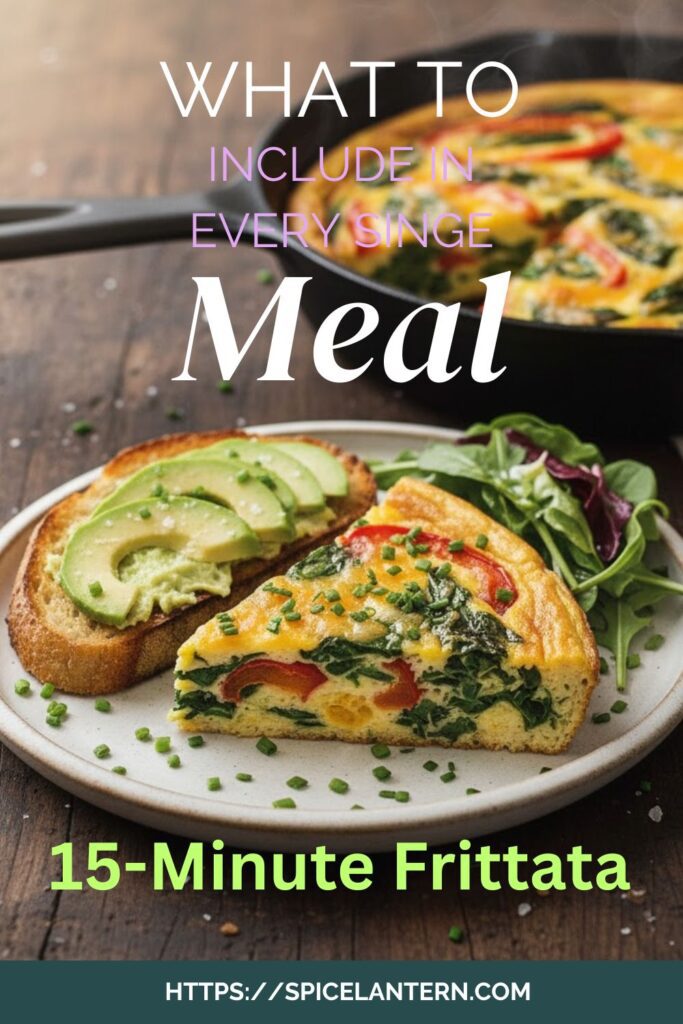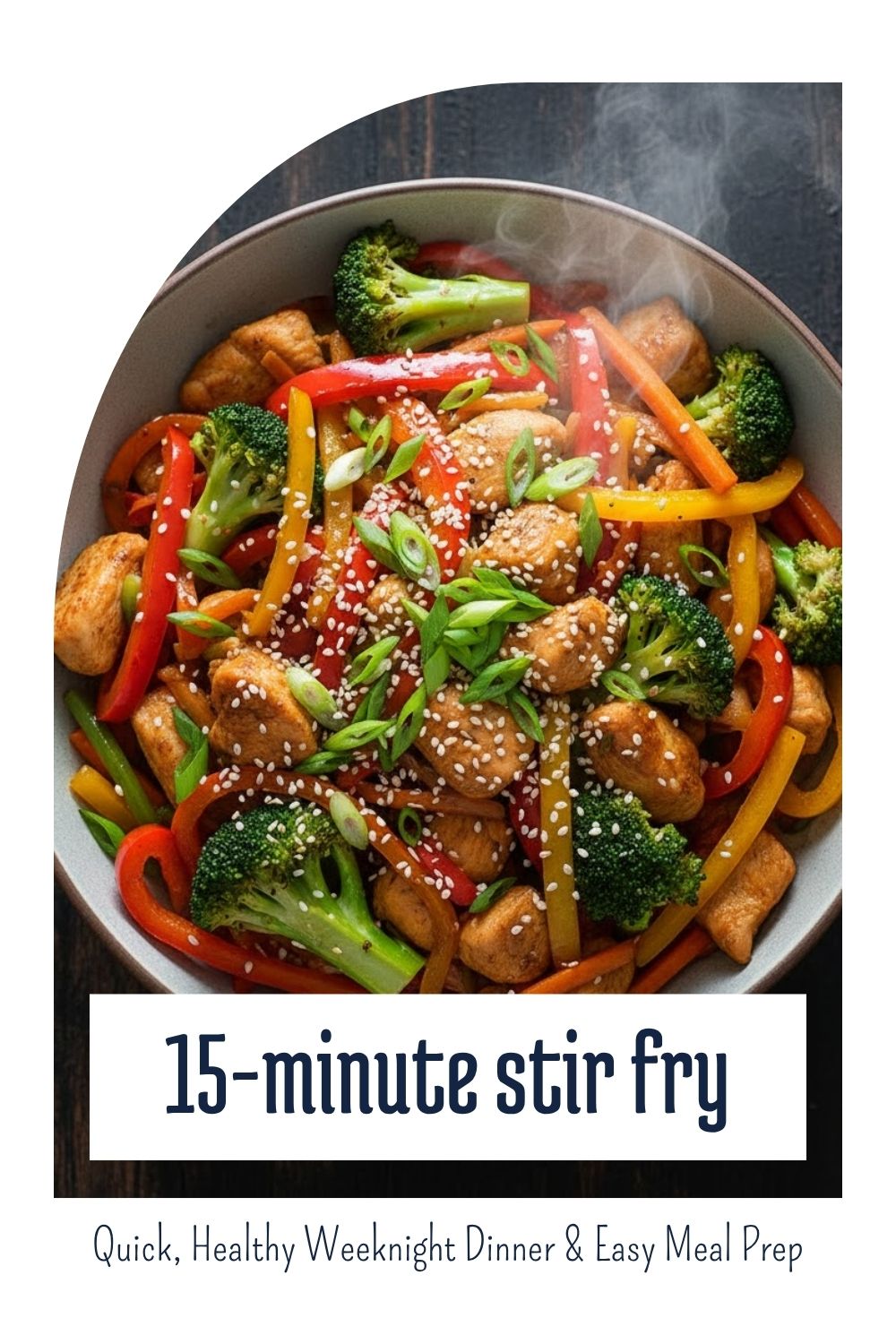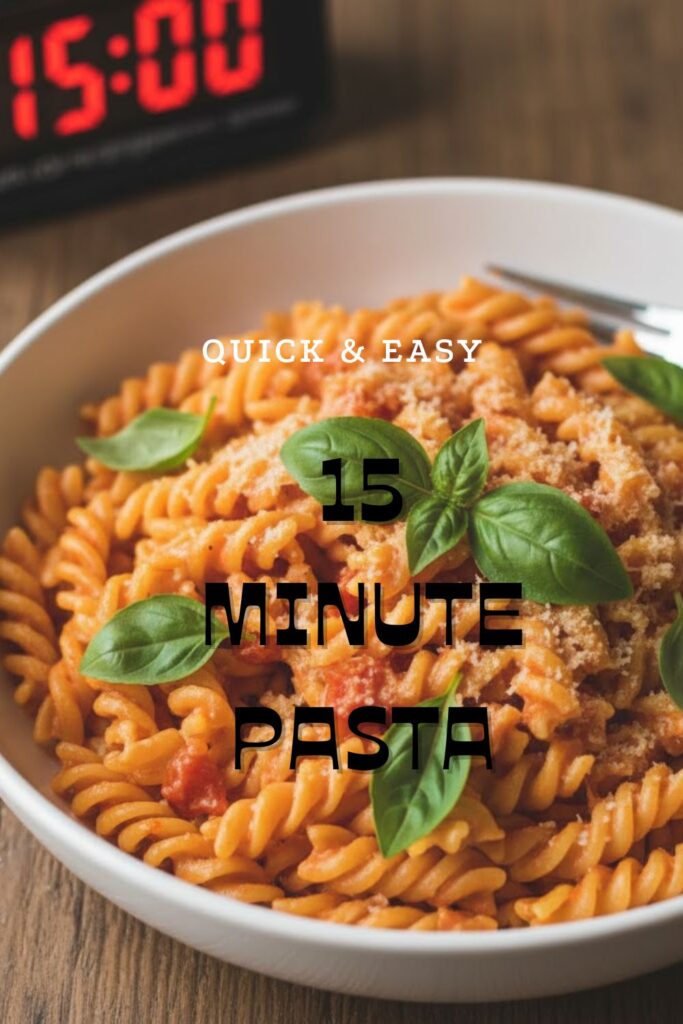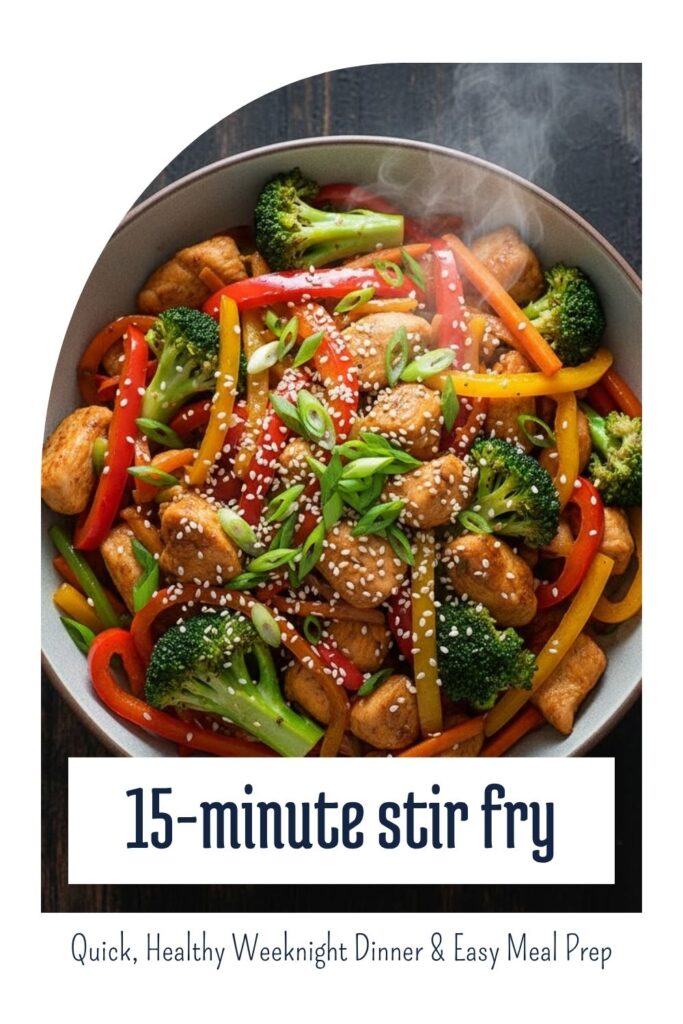The Ultimate Brunch Cheat: Your Guide to the 15-Minute Frittata
Let’s face it, we love brunch food, but who wants to spend an hour making a fussy quiche that requires a crust and delicate custard? You want protein, you want veggies, and you want it in your face fast. Enter the 15-Minute Frittata—the elegant, crustless, and infinitely customizable Italian masterpiece. This is basically the “clean out the fridge” champion of egg dishes, and the best part? We use a powerful kitchen hack to cook it fast, so you go from zero to serving a magnificent, puffy egg pie in less time than it takes to get coffee at a crowded cafe. Why eat boring eggs when you can have this gorgeous golden disk?
Why This Recipe Is Awesome (It’s High-Protein, Low-Effort)
This isn’t just breakfast; it’s a statement about efficiency.
- Actual 15-Minute Cook Time: We rely on two key factors: pre-cooked fillings (leftover chicken, already-sautéed veggies) and a screaming hot oven/broiler combo. This sets the eggs fast and perfectly, giving you a smooth, custardy texture.
- The Keto/Low-Carb King: Frittatas are naturally crustless, making them the ultimate high-protein, low-carb meal. You get all the flavor and satisfaction without the heavy guilt.
- Leftover Genius: Seriously, have a tablespoon of goat cheese, three sun-dried tomatoes, or half a cup of roasted potatoes? Throw it in! The frittata judges no one, and you’ve successfully conquered food waste.
Ingredients: The Golden Essentials
The key is fresh, high-quality eggs, and full-fat dairy for a beautiful texture.
- 6 large Eggs: Room temperature eggs incorporate better and yield a fluffier result.
- 2 tablespoons Heavy Cream or Full-Fat Milk: Crucial for creaminess and fluff! Too much dairy, however, will weigh down the eggs.
- ½ teaspoon Salt and ¼ teaspoon Black Pepper: Seasoning is vital for eggs!
- 1 tablespoon Olive Oil or Butter: For sautéing and greasing the pan.
- 1 cup Pre-cooked Fillings: Choose 1-2 items from your fridge: cooked chicken/sausage crumbles, roasted vegetables (peppers, onions, potatoes), or sautéed mushrooms/spinach (blotted dry!).
- ½ cup Shredded Cheese: Gruyère, sharp Cheddar, or Goat Cheese crumbles melt beautifully and add flavor.
Key Substitutions:
- Heavy Cream: Use half-and-half or full-fat coconut milk for a dairy-free option. Avoid low-fat milk; the higher water content can make the frittata soggy.
- Cheese: Use nutritional yeast and a splash of lemon juice for a cheesy, dairy-free flavor profile.
- Oil/Butter: Clarified butter (Ghee) works perfectly for high-heat searing.
Tools & Kitchen Gadgets Used: Oven-Safe Only!
You absolutely must have a pan that can handle high oven heat.
- Oven-Safe Skillet (10-12 inch): MANDATORY. Cast iron is the gold standard for even heat distribution, but a sturdy, oven-safe non-stick pan works too.
- Whisk: For aggressively whipping the eggs.
- Cutting Board and Knife: For quickly chopping up any fresh or leftover fillings.
- Medium Mixing Bowl: For whisking the eggs.
- Oven Mitts: Don’t forget, the handle is hot!
Step-by-Step Instructions: The Custardy Command
We start on the stove and finish fast in a hot oven. Preheating is your friend.
Step 1: Preheat and Whisk (5 Minutes)
- Preheat the Oven: Set your oven to 400°F (200°C). Place the rack in the center position.
- Whisk the Eggs: In your mixing bowl, whisk the eggs, heavy cream, salt, and pepper vigorously for about 60 seconds. You want the mixture frothy and slightly aerated. This ensures a fluffy frittata!
- Prep the Fillings: Dice/chop any raw vegetables or meats and sauté them lightly in the oven-safe skillet now. Squeeze all moisture out of greens like spinach!
Step 2: The Stovetop Start (3 Minutes)
- If you used cooked fillings, add the olive oil/butter to the skillet and warm the fillings over medium heat for 2 minutes. If using pre-cooked fillings, just warm them through.
- Spread the Fillings: Ensure the fillings are spread evenly across the bottom of the pan. This ensures you get a little bit of everything in each bite.
- Pour the Eggs: Sprinkle about half the cheese over the fillings. Pour the whisked egg mixture evenly over the fillings.
- Cook for 1 minute on the stove until the edges begin to set, like a runny pancake.
Step 3: Bake and Finish (7 Minutes)
- Transfer the Skillet carefully to the preheated 400°F oven.
- Bake for 5-7 minutes. The frittata is done when the edges look set and golden, and the center is just barely set (it should still jiggle slightly).
- Optional Broiler Finish: For a beautiful golden top, sprinkle the remaining cheese on top during the last 2 minutes, or finish it under the broiler (grill) for 30-60 seconds (WATCH IT CLOSELY!) until the top is lightly puffed and golden.
Step 4: Rest and Serve (5 Minutes)
- Remove the skillet from the oven (remember the handle is nuclear hot!). Let the frittata rest for 5 minutes. This allows the center to finish setting and prevents overcooking.
- Run a thin spatula around the edges, slice into wedges, and serve directly from the skillet. Delicious!
Calories & Nutritional Info: The Clean Facts (Estimated)
These are estimates for one generous serving (1/4th of a 10-inch frittata).
- Calories per serving (1/4th): ~250-350 calories
- Protein: ~18-25g (Excellent source of complete protein.)
- Fat: ~18-25g (Mostly from eggs, dairy, and oil.)
- Carbohydrates: ~5-10g (Naturally low-carb, varies based on veggie content.)
- Nutritional Note: Frittatas are naturally gluten-free and a fantastic source of Vitamin D and Choline from the eggs.
Common Mistakes to Avoid: The Egg Traps
Eggs are finicky. Respect the curd!
- Overcooking the Eggs: The greatest mistake! Overcooked frittata becomes dry, spongy, and rubbery. Remove it when the center is still slightly jiggly; carryover heat will finish the cooking.
- Wet Fillings: Using watery ingredients (like fresh tomato slices or raw, un-drained mushrooms/spinach) will release moisture into the eggs, resulting in a soggy, unset bottom. Blot or pre-sauté fillings!
- Cold Pan Start: Starting the eggs on a cold pan prevents the bottom edge from setting, leading to sticking. Use a warm, well-greased skillet.
- Over-Dairy Disaster: Too much milk or cream weighs down the eggs, preventing them from puffing up. Stick to the 2 tablespoons per 6 eggs ratio for fluffiness.
- Forgetting the Whisk: You need to whip the eggs vigorously to incorporate air. This trapped air is what makes the frittata light and fluffy when baked.
Variations & Customizations: Your Flavor Playground
The frittata is your canvas. Paint with your favorite leftovers!
- Sun-Dried Tomato & Feta (Mediterranean): Use crumbled feta cheese and chopped sun-dried tomatoes (drained of oil) as fillings. Finish with fresh oregano.
- Chorizo & Pepper Jack (Spicy Keto): Sauté cooked chorizo crumbles and finely diced bell peppers. Use Pepper Jack cheese for a spicy, molten center.
- Ricotta & Leek (Creamy Vegetarian): Sauté thinly sliced leeks until soft. Place small dollops of full-fat ricotta cheese evenly over the eggs before baking. The ricotta melts into pockets of creamy goodness.
FAQ Section: The Frittata Fundamentals
Let’s address the most common questions about this versatile egg dish.
Q1: What is the difference between a frittata and a quiche?
A: A frittata is crustless, cooked briefly on the stove, and finished in the oven/broiler. A quiche is baked in a pastry crust and often contains more cream/milk (a true custard).
Q2: What kind of pan is best for a frittata?
A: A 10- or 12-inch cast iron skillet is ideal because it retains heat and can go directly from the stovetop to the oven. You must use an oven-safe pan!
Q3: How do I prevent my frittata from sticking?
A: Use a well-seasoned or non-stick pan and ensure you grease it generously with butter or oil. Heating the pan briefly before adding the eggs also helps the edges set and release cleanly.
Q4: Can I make a frittata ahead of time?
A: Yes! Frittatas are excellent cold or reheated. Bake it fully, let it cool, slice it, and store the slices in an airtight container for up to 4 days in the fridge.
Q5: Can I just bake the frittata without starting it on the stove?
A: You can, but it takes longer and the bottom won’t be as evenly set. Starting on the stove for 1-2 minutes accelerates the cooking process and helps prevent a raw, unset layer at the bottom.
Q6: Why did my frittata deflate when I took it out of the oven?
A: Some deflation is normal! If it flattens completely, it was likely slightly undercooked and the structure collapsed, or you used too much dairy which made the center too heavy.
Q7: Should I use milk or cream for the best texture?
A: Use heavy cream or half-and-half. The higher the fat content, the creamier and less rubbery the final texture. Milk works but can result in a slightly tougher texture due to its water content.
Final Thoughts: Brunch is Served (Fast)
You just created a gorgeous, high-protein 15-Minute Frittata that is the definition of flexible, delicious dining. You mastered the oven hack and the art of the perfect, wobbly center. Go ahead, slice that beauty and enjoy a meal that proves elegance doesn’t require hours of work.







